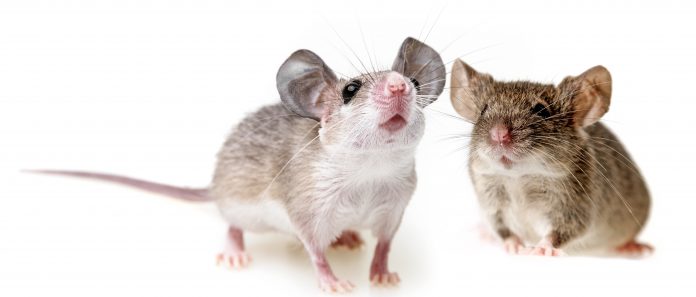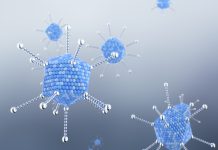Examining existing approved compounds to treat Covid-19 can significantly speed up the development of drugs
The SARS-CoV-2 pandemic that started more than two years ago still threatens human life worldwide. Because of the invention of mRNA vaccine, the danger to human life because of Covid-19, a disease caused by SARS-CoV-2, has been drastically reduced. Nevertheless, since multiple and periodical vaccination is required to maintain immunity and side reaction caused by vaccination is relatively severe, the invention of effective drugs is eagerly waited.
Drug development is usually a long way to go; starting from the preparation of as many as a million candidate drug compounds, testing in virtro, which means investigation in petri dish follows, confirmation by model animal might be required.
Even if some effective drugs are found, many other aspects of compounds, e.g. solvability in water that can allow patient to take orally, no other critical side effects toward humans must be confirmed. On the other hand, if we can make use of known drugs to treat Covid-19, we can make effective drugs quickly, since these compounds have already been approved as drugs. In this article, I would like to introduce one of such efforts, performed by ourselves.
Importance of employment of model animals
In the previous article published in Open Access Government [1], we have introduced our trials to develop Covid-19 drugs with applying computational methods to gene expression profiles of human lung cells infected by SARS-CoV-2 cultured in petri dishes.
Although investigation of cells incubated in petri dishes is easy to perform, it does not always provide a correct result. For example, numerous discussions of the effectiveness of ivermectin towards Covid-19 is largely because of inconsistency of effectiveness between patients and cell lines (cells incubated in petri dishes).
Since it is impossible to test new candidate compounds towards human patients, preparation of alternative model animal to which we can test new drug candidate compounds is important. One possible problem is that the infection of SARS-CoV-2 to animals does not always exhibit the same symptom. Thus, we need a suitable animal model by which we can emulate SARS-CoV-2 infection to the human lung. Fortunately, we have such an animal model: infection of mouse hepatitis virus (MHV) to mouse liver. Although one might wonder if infection to liver can be a good model of infection to human lungs, it actually works well.
In order to find which genes expression is altered by MHV infection to liver, we employed tensor decomposition (TD) based unsupervised feature extraction (FE) [2]. TD-based unsupervised FE is an advanced machine learning method, which we invented a few years ago and has already been successfully applied to wide range of biological problems, including identification of disease biomarker, investigation of disease-causing genes and drug repositioning. With applying TD-based unsupervised FE to mouse liver infected by MHV, we successfully identified 134 genes whose expression is altered by MHV infection [3]. Interestingly, the identified 134 genes significantly overlap with human genes known to interact with SARS-CoV-2 proteins during infection. Thus, if we can identify drug compounds that can interrupt the interaction between these human genes and SARS-CoV-2 proteins among known drug compounds, these compounds can be a promising candidate for Covid-19 treatment.
Identification of drugs that can target selected genes with data science
The strategy to find drug compounds that can target selected 134 genes is rather simple. Owing to the recent development of data science, we have already had huge databases that store gene expression of cell lines and model animals treated with various known drugs effective to various drugs. The number of genes listed for individual drugs is very limited, at most a few hundred; if compared with total number of human genes: 20,000. This means that both genes whose expression is altered by individual drug treatment and the 134 genes selected in this study is as small as a few percentages of all human genes. Thus, accidental agreement between these two sets of genes is supposed to be only a few. If there are more than a few genes shared by these two sets of genes, the drug can be regarded to be promising candidate drugs toward SARS-CoV-2 infection, ie Covid-19.
Interestingly, we could find numerous “hits” due to this criterion using multiple databases. In addition to this, detailed investigation of these identified drugs show that they include huge number of antivirus drug compounds. Since we did not intentionally select drugs to be effective to virus, the fact that selected genes include many antivirus drugs suggest that our strategy seems to work very effectively.
Concluding remarks
Together with the study introduced by our previous article published in Open Access Government [1], we have had very effective tools to investigate Covid-19 using computers with public domain datasets. Now the number of datasets available for Covid-19 investigation has grown extensively. Since these two studies, we introduced by the present and previous articles published in Open Access Government were performed in the very early stage of Covid-19 pandemic, we could not have enough amount of data to which we could apply our methodology. By applying our methodology to newly obtained massive datasets, we can expect that we can perform more advanced, accurate and effective drug depositioning.
References:
[1] Y-h. Taguchi, How to compete with COVID-19 with a computer? Open Access Government, issue 33, pp.210-211 (2022).
[2] Y-h. Taguchi, Unsupervised Feature Extraction Applied to Bioinformatics: A PCA Based and TD Based Approach, Springer International (2020).
[3] Y-H. Taguchi and T. Turki, “Application of Tensor Decomposition to Gene Expression of Infection of Mouse Hepatitis Virus Can Identify Critical Human Genes and Effective Drugs for SARS-CoV-2 Infection,” in IEEE Journal of Selected Topics in Signal Processing, vol. 15, no. 3, pp. 746-758, April 2021, doi: 10.1109/JSTSP.2021.3061251.
Please note: This is a commercial profile
© 2019. This work is licensed under CC-BY-NC-ND.








